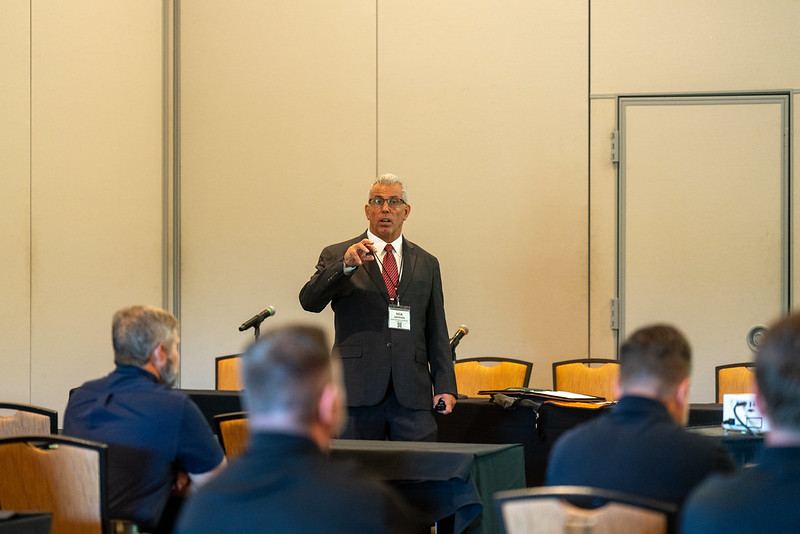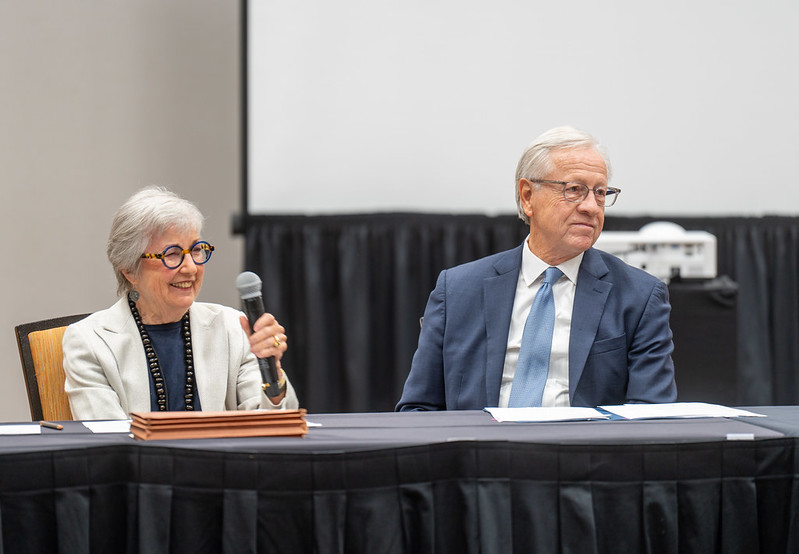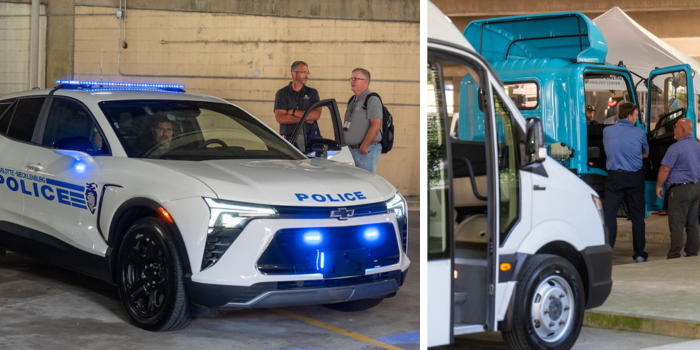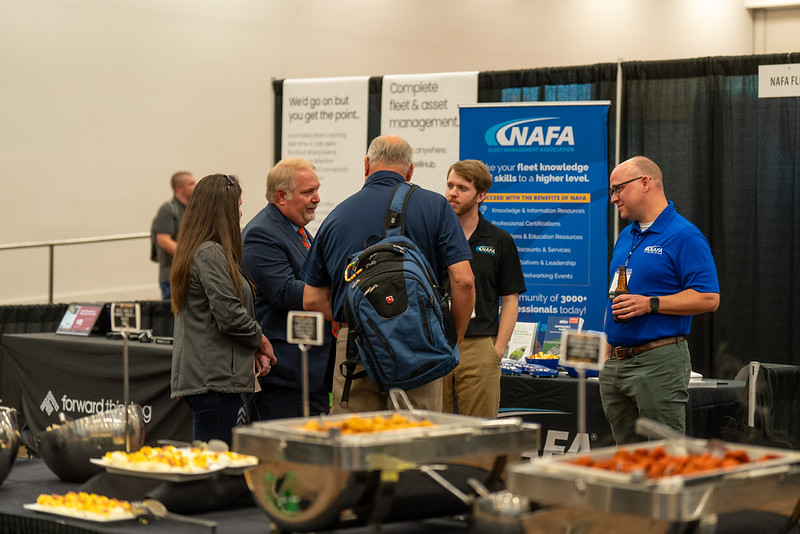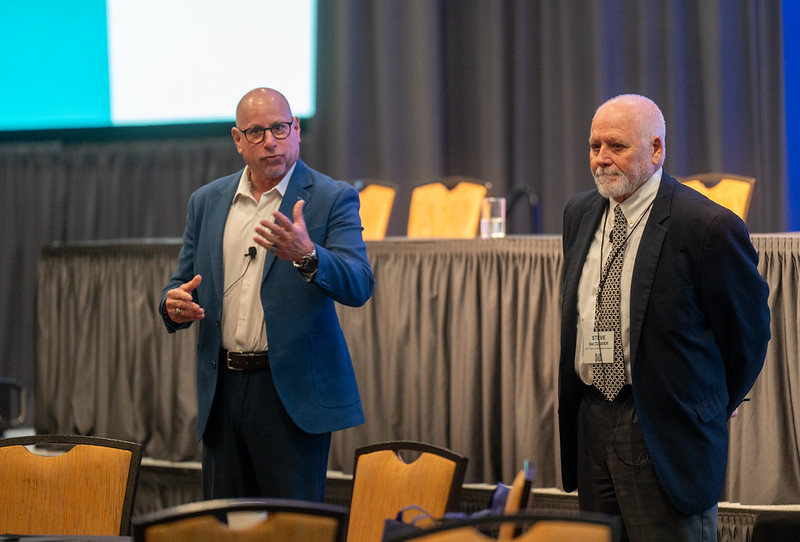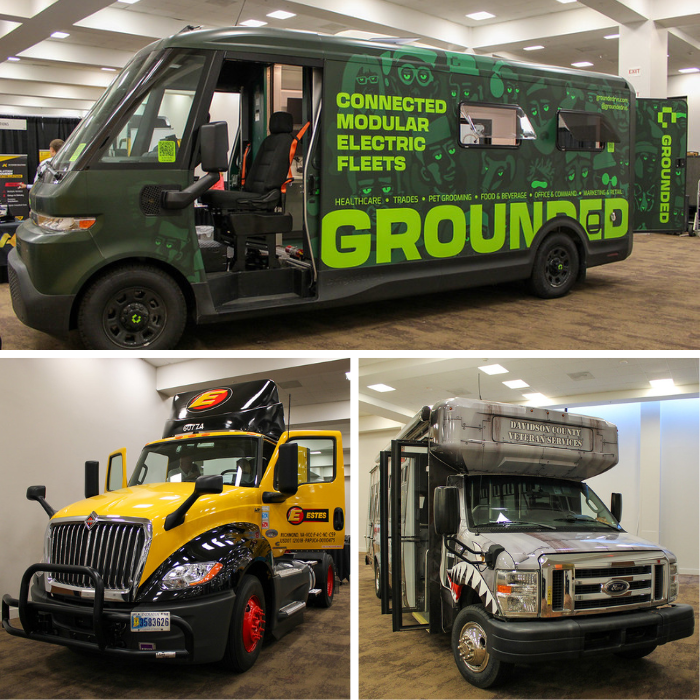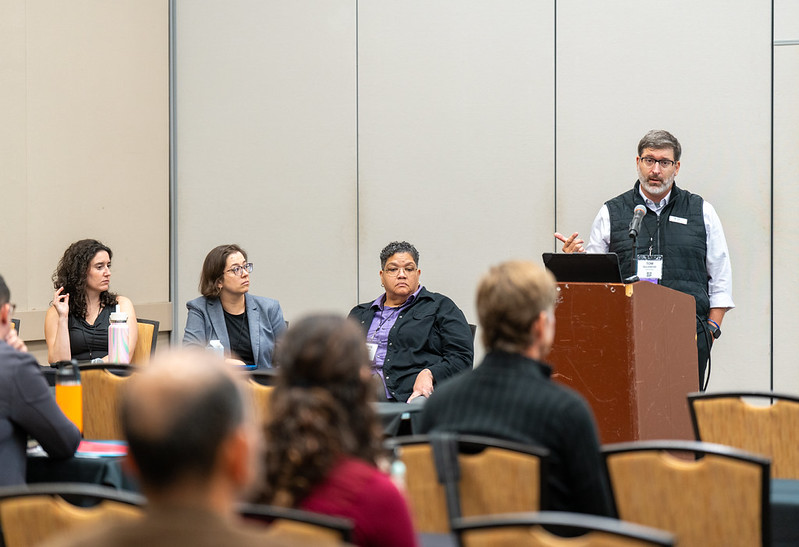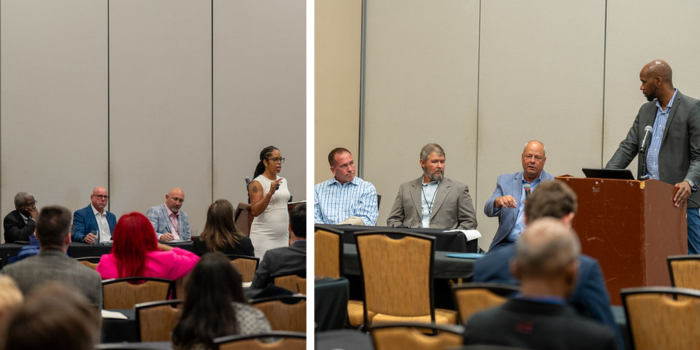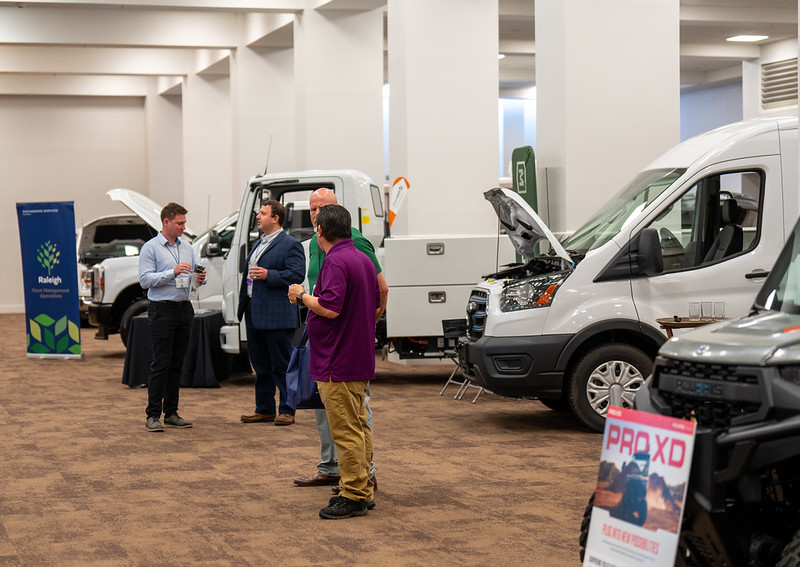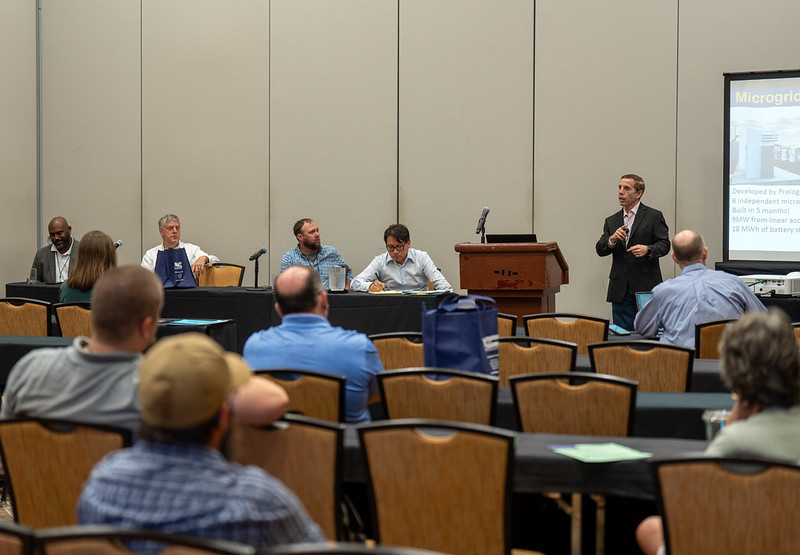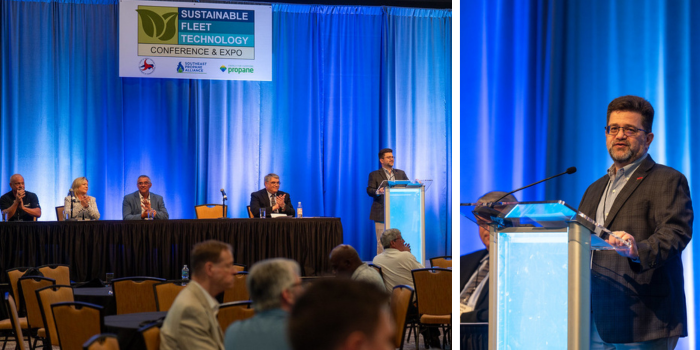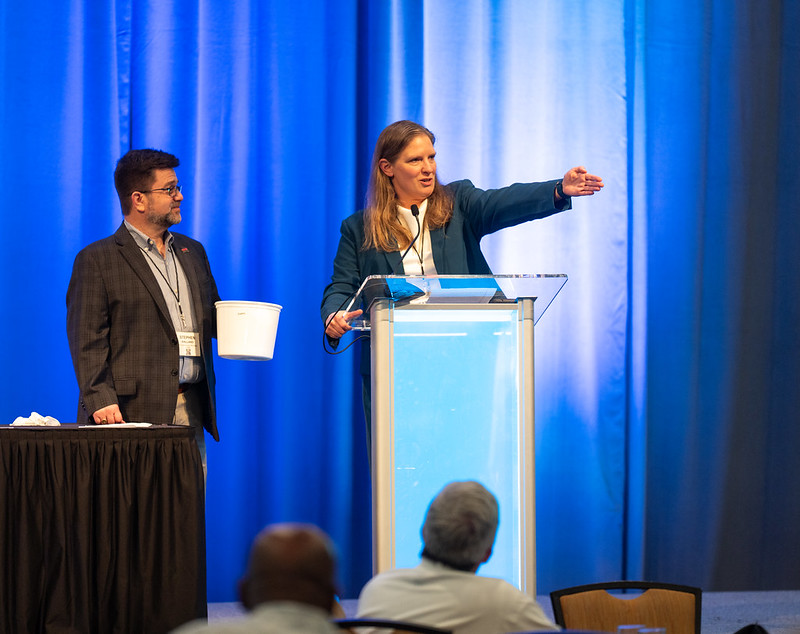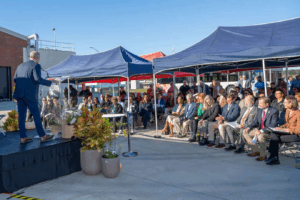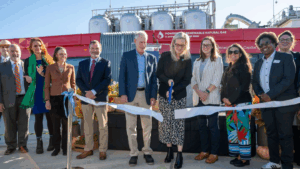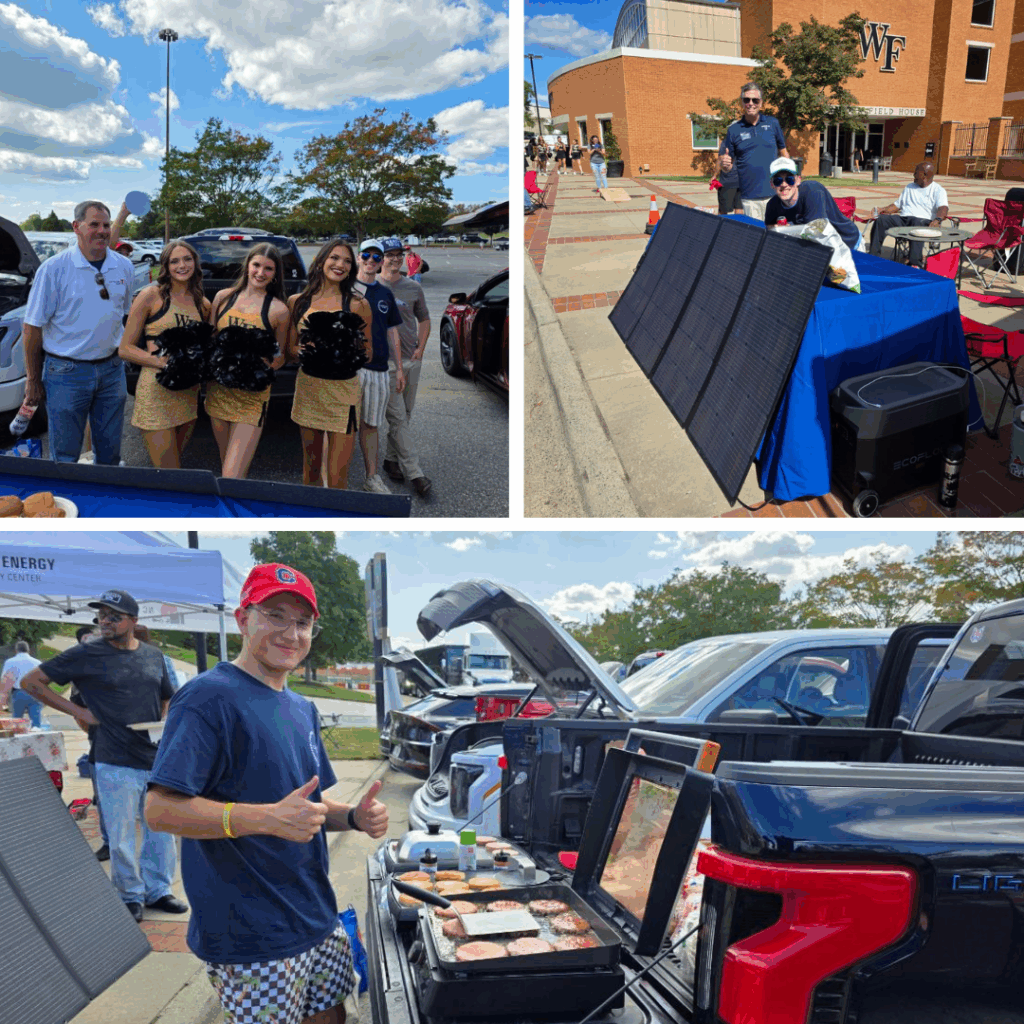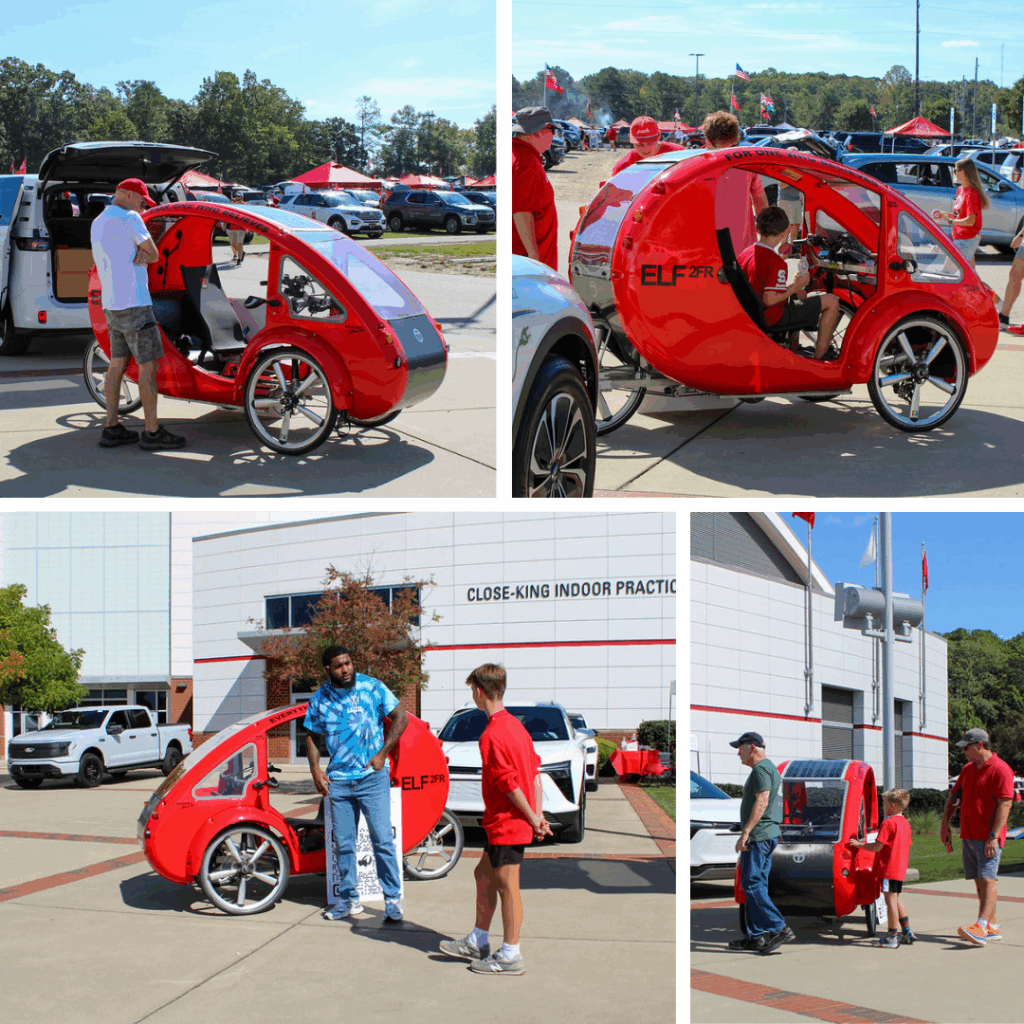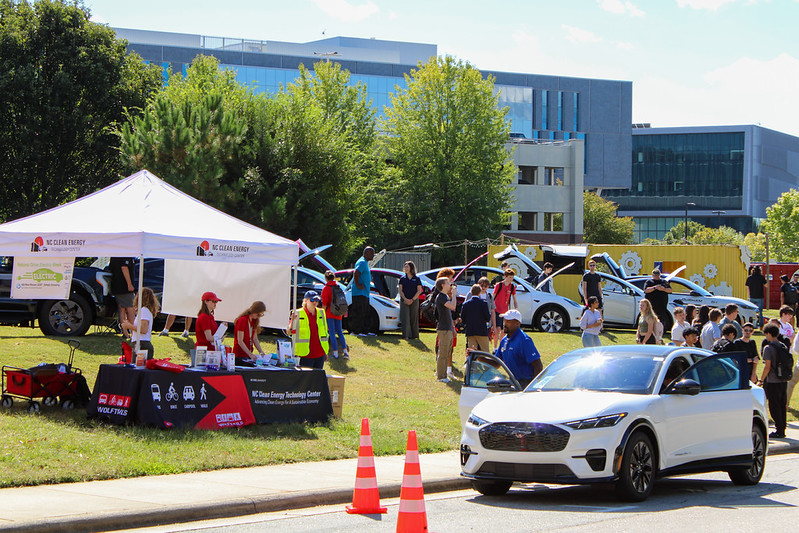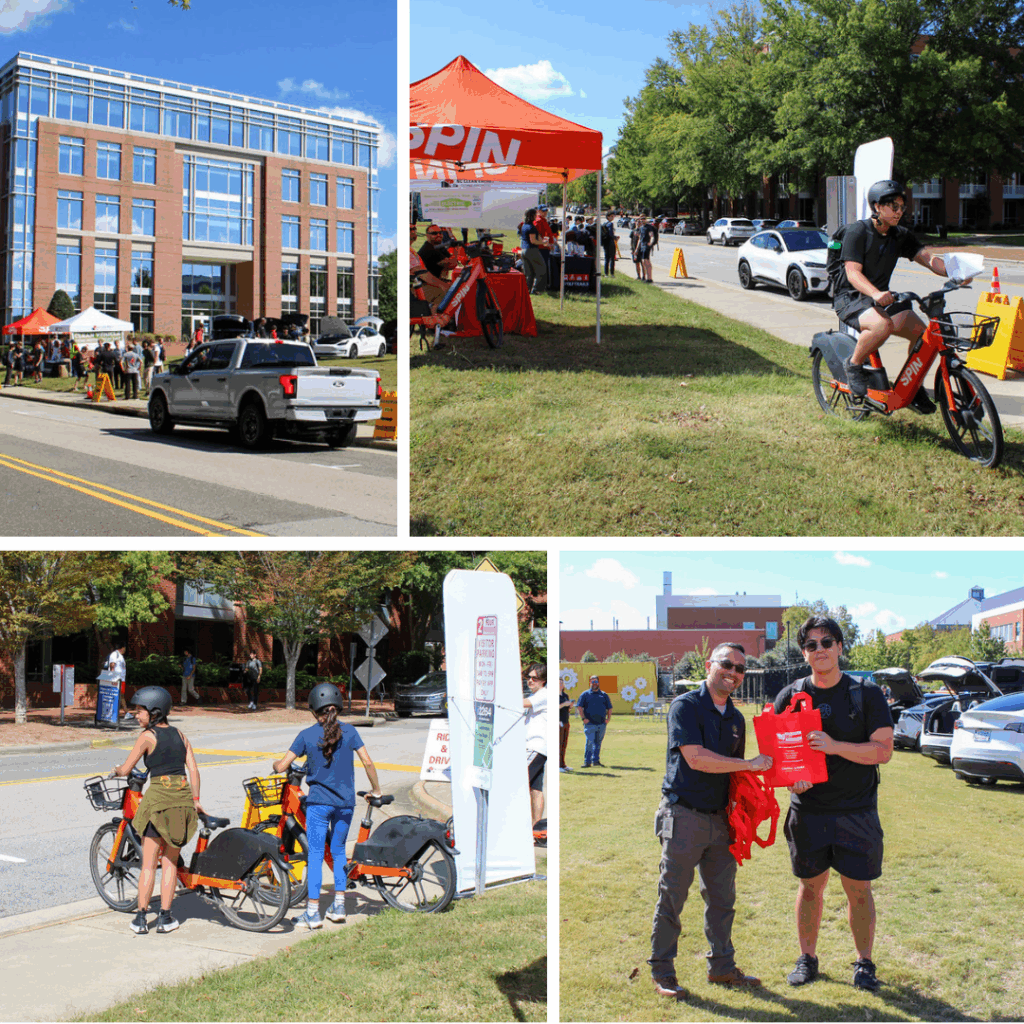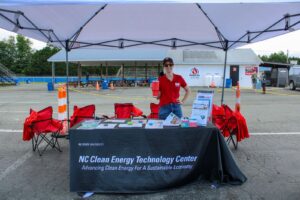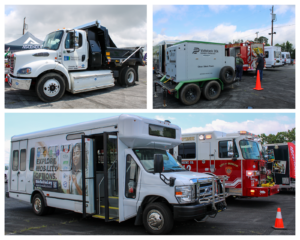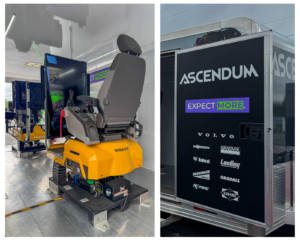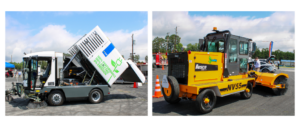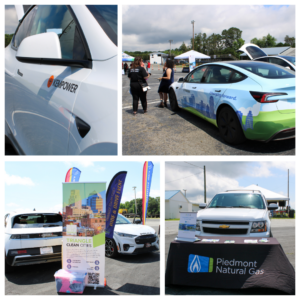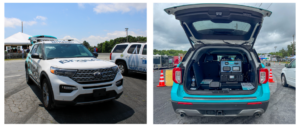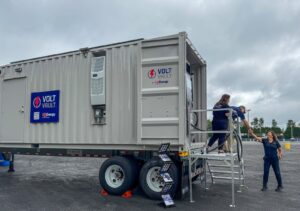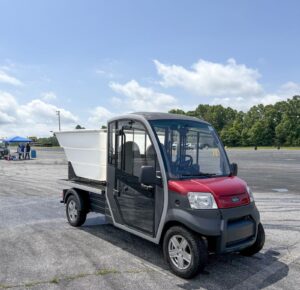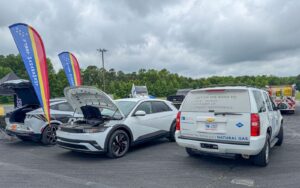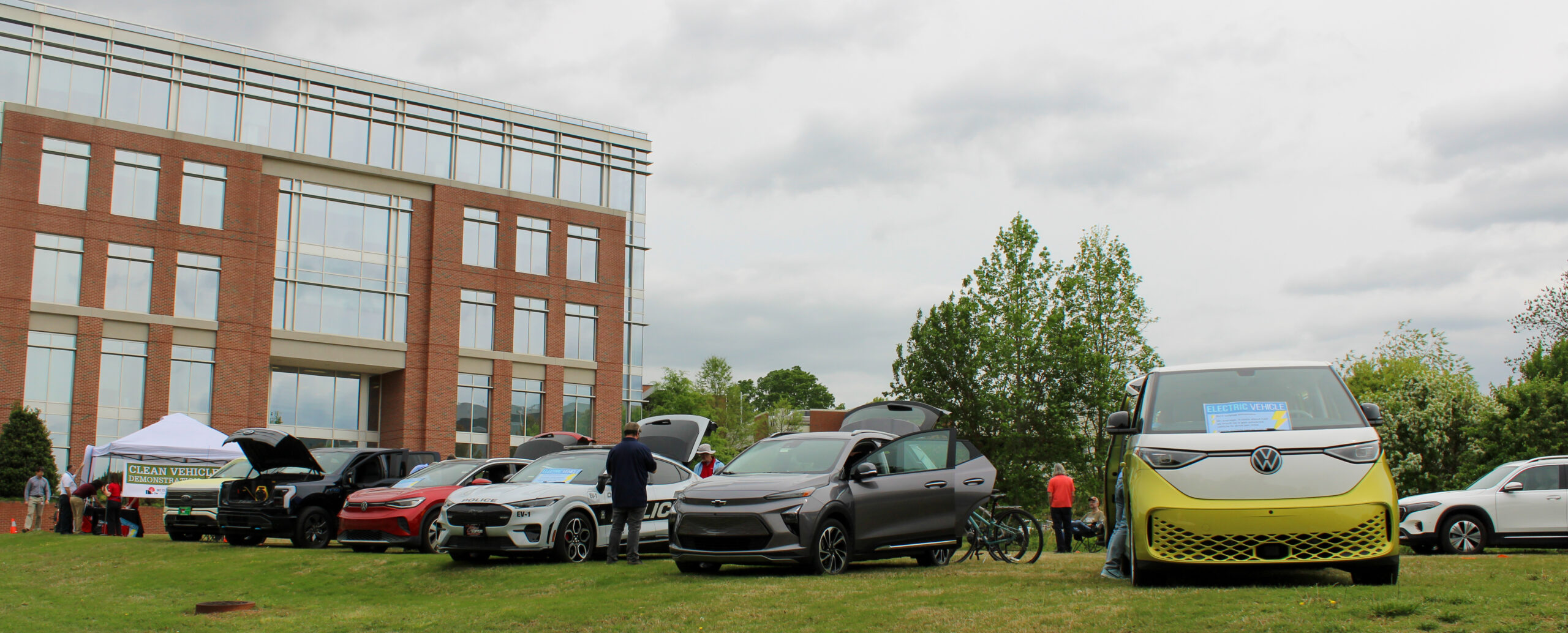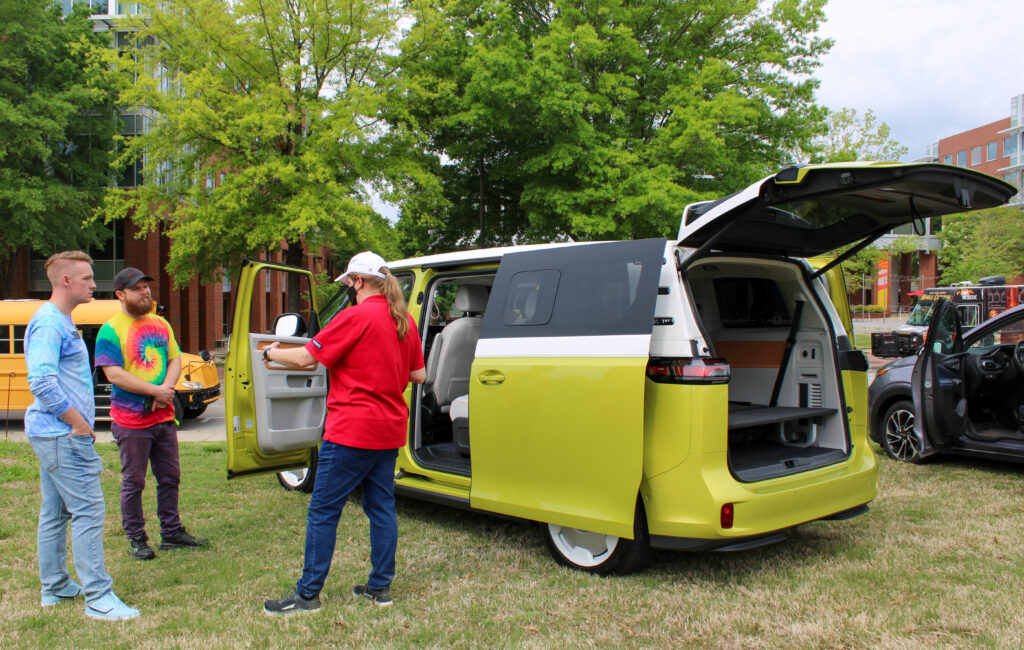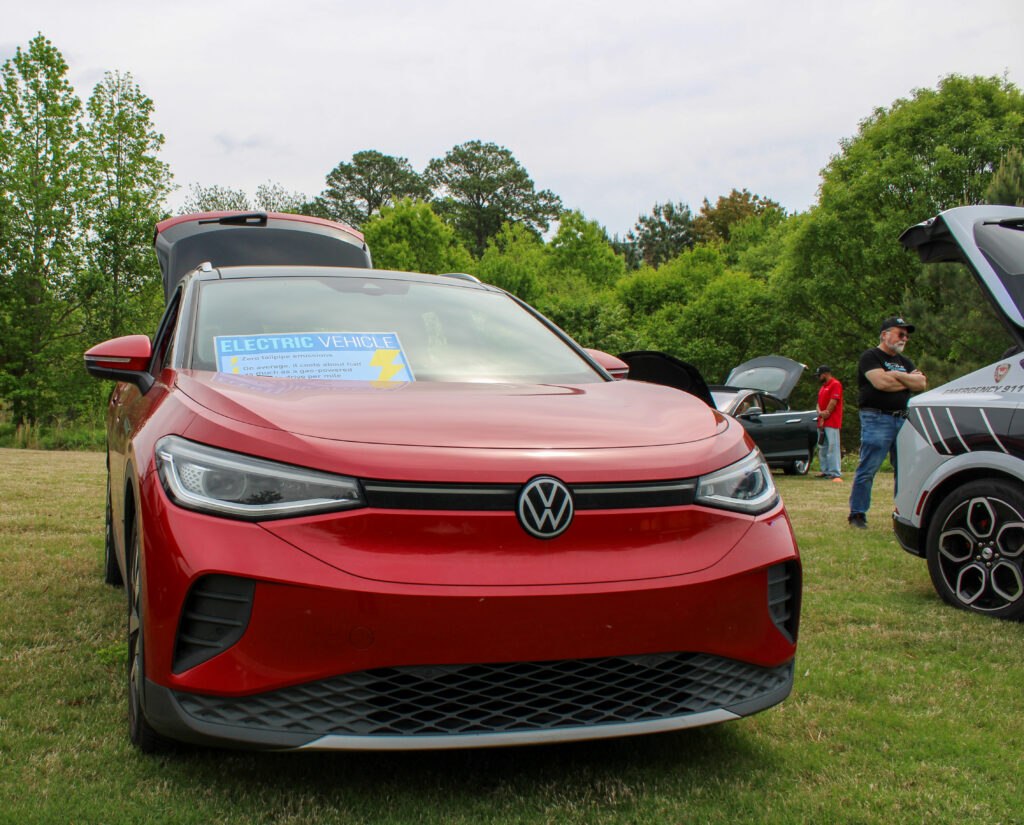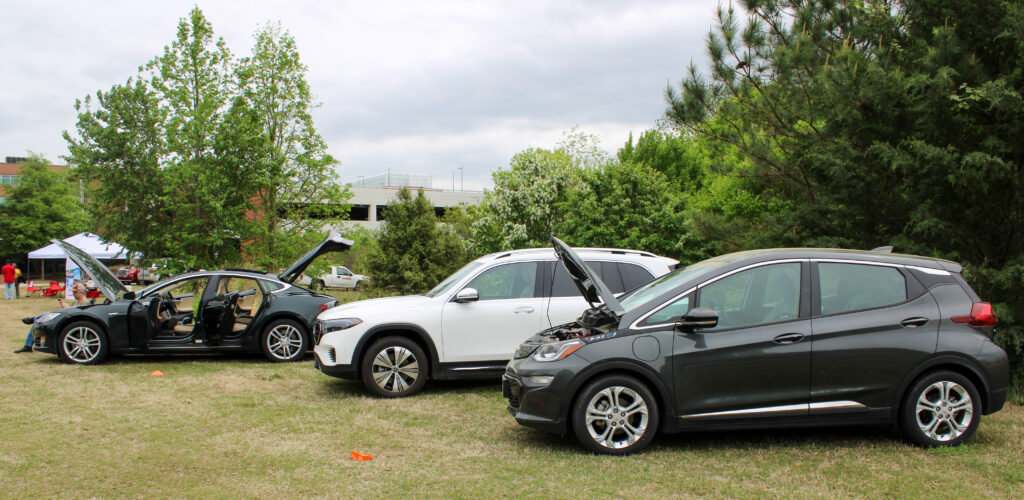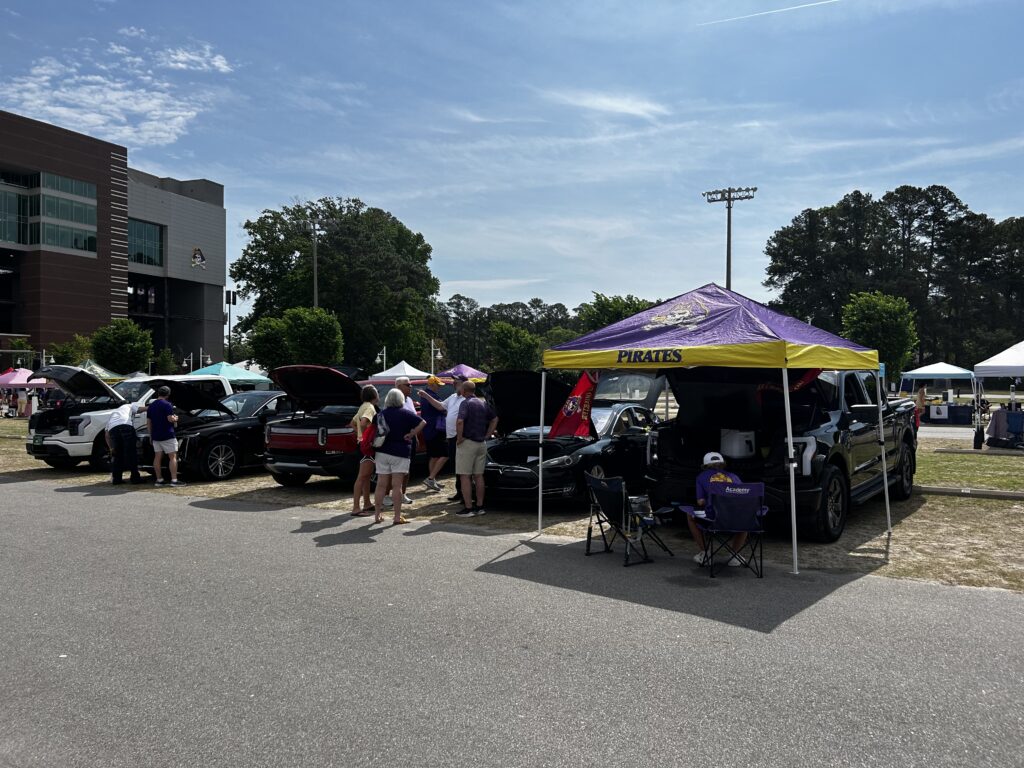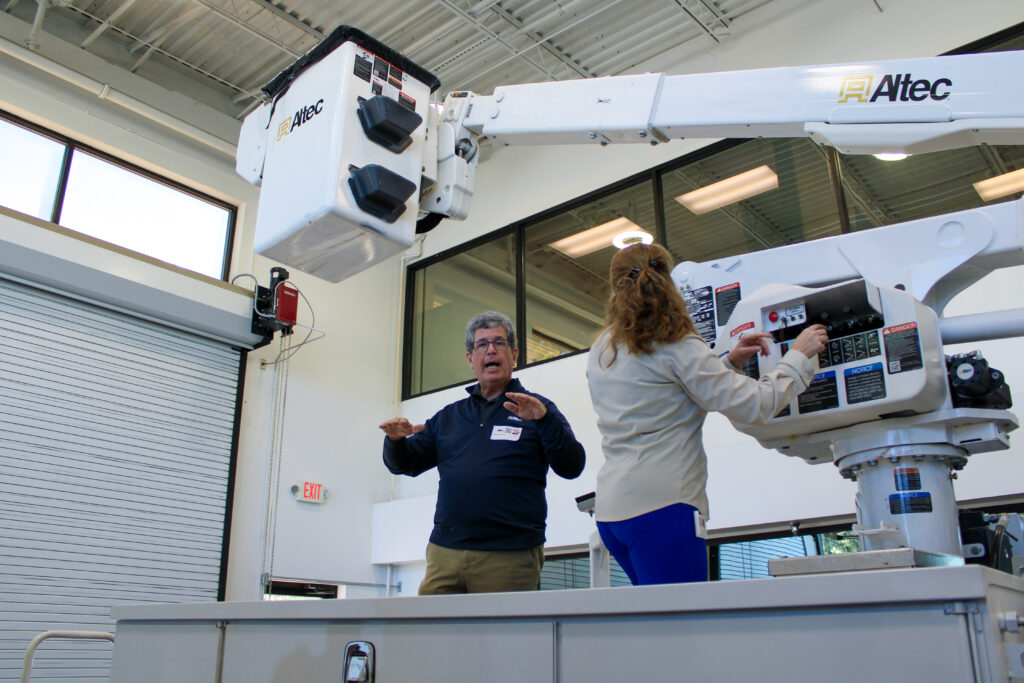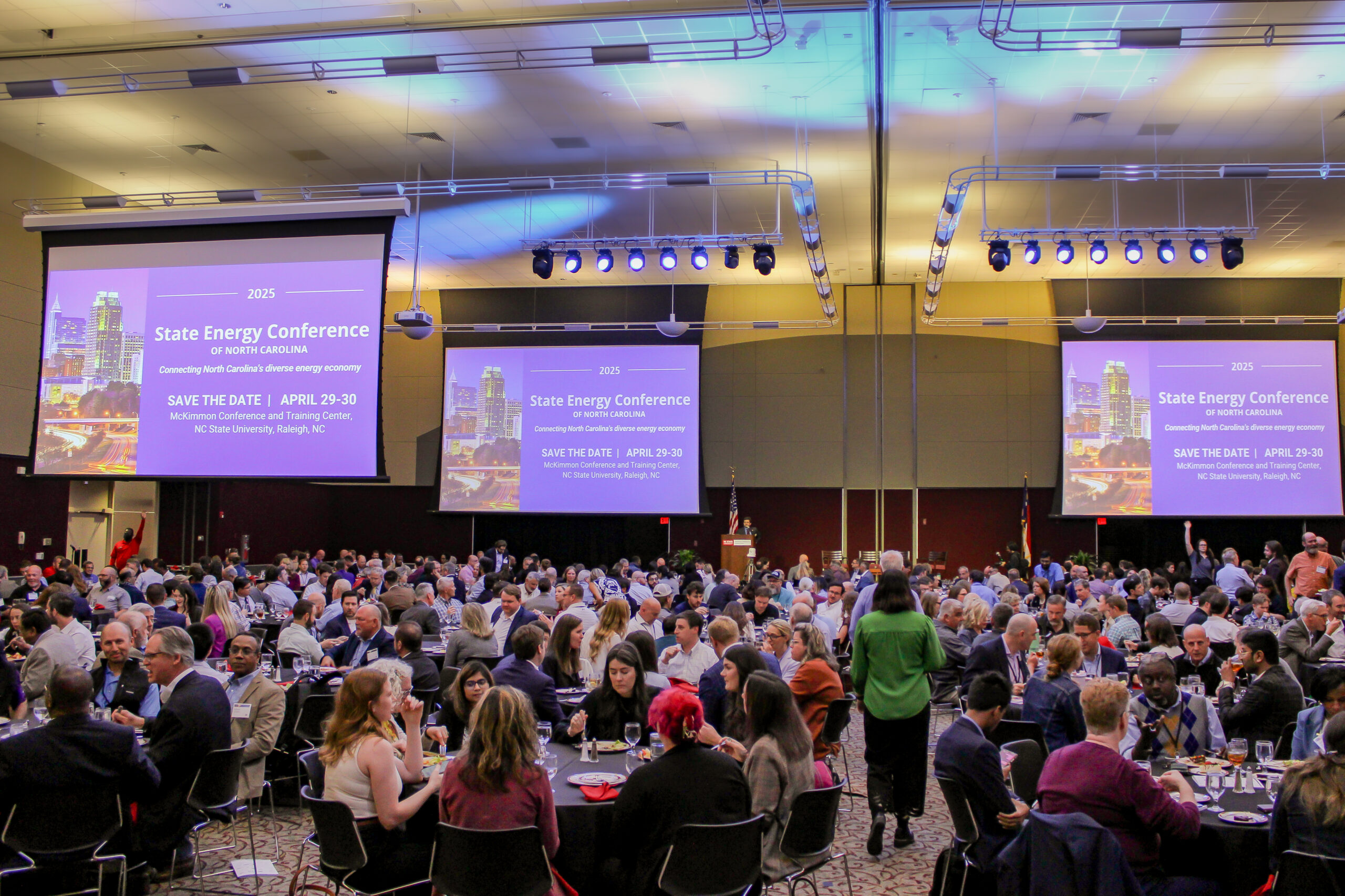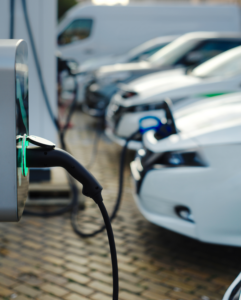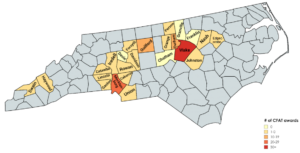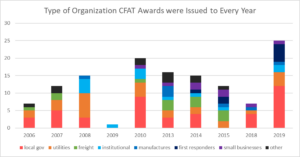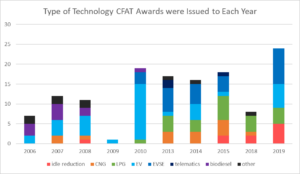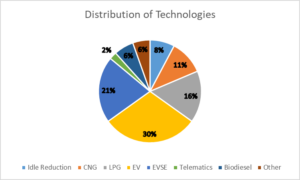By: Dawn Haworth, Public Communications Specialist
Each year, the Sustainable Fleet Technology Conference & Expo brings together leading fleets and technology providers to showcase the latest and greatest transportation technologies, fuels and trends. The Clean Transportation program at the NC Clean Energy Technology Center (NCCETC) organizes this event and plans throughout the year to bring expert speakers together with industry professionals.
This year, the event took place August 25-27, 2025, at the Benton Convention Center in Winston-Salem, North Carolina.
The three-day event kicked off with a Sustainable Fleet Management Bootcamp & Certificate Program held by NAFA Fleet Management Association.
Pictured above: Rick Sapienza, Dean and Transportation Technologies Director for the Hendrick Center for Auto Excellence at Wake Technical Community College, teaches the NAFA Sustainable Fleet Management Program.
In the afternoon, a Local Elected Leaders Roundtable was held, featuring the Mayor of Winston-Salem, the Mayor of Durham, and council members from across the state.
Pictured above: Greensboro Council Member District 4 Nancy Hoffmann (left) and Mayor J. Allen Joines (right) take a question from the audience during the roundtable.
At the same time, a Ride & Drive event was held across the street from the Convention Center at the 6th and Cherry St. Parking Garage. Conference attendees enjoyed chatting with each other about the alternative fuel vehicles on display, and some chose to take them for a short test drive through downtown Winston-Salem.
Following the Ride & Drive event, participants gathered in the main ballroom to attend the opening keynote address, “Best Practices from Leading Green Fleets.” The panel speakers included Tim Coxwell (Leon County, Fl), Jim Hineson (Port Authority of NY & NJ), and Keith Kerman (New York City DCAS), moderated by Rhea Coutney Bozic (Clean Fuels Consulting).
Pictured above: “Best Practices from Leading Green Fleets” Opening Keynote Panel.
After attendees heard about the best practices from past NAFA Green Fleet award winners, the Green Fleet Awards Ceremony was held, announcing the new Green Fleet winners. Following the ceremony, everyone headed downstairs to the Expo Hall for a reception, which closed out the first day of the conference.
Pictured above: Conference attendees network at the Green Fleet Awards Reception.
Day two kicked off with a morning keynote address during breakfast. City of Raleigh Fleet Operations Manager Rick Longobart and Ron Turley Associates Director of Fleet Consulting Steve Saltzgiver gave a dynamic keynote on “The Pillars of Fleet Success.”
Pictured above: Rick Longobart (left) and Steve Saltzgiver (right).
Attendees then had a chance to explore the Expo Hall, which featured numerous exhibitors and several indoor vehicles on display.
Pictured above: Attendees network with exhibitors during the morning Expo Hall break.
Pictured above: Indoor vehicle displays in the Expo Hall.
The first breakout session of the conference began after the dedicated Expo Hall break. Attendees had three tracks to choose from throughout the conference: Planning, Policy, and Funding; Advanced Vehicle Technologies; and Medium & Heavy-Duty Vehicles & Infrastructure.
The Planning, Policy, and Funding track included the following breakout sessions:
- Funding and Finance: It All Starts with $
- Right-sizing Your Fleet: Balancing Efficiency, Sustainability, and Performance
- Forecasting for Fleet: Predictive Analytics
- Local Government Readiness for Electric Vehicles
The breakout sessions in the Advanced Vehicle Technologies track included:
- Telematics
- Cybersecurity: Concerns for Fleet Managers
- Battery Technologies
- First Responder Vehicle Options
The Medium & Heavy-Duty Vehicles & Infrastructure track sessions included:
- Hydrogen as a Transportation Fuel
- Renewable Fuels in Fleet Transportation
- Electric Vehicle Charging Maintenance for Fleets
- Keeping the Power On: Distributed Energy Resources for Fleets
Pictured above: Individuals attend the breakout session, “Funding and Finance: It All Starts with $.”
After the first breakout session, a buffet lunch was served, followed by a Luncheon Keynote by Boris Kort-Packard, Chief Engineer for Global Vehicles at FedEx.
Pictured above: Boris Kort-Packard gives a luncheon keynote address.
Attendees then returned to breakout rooms of their choice to participate in the second session.
Pictured above: Individuals attend breakout sessions of their choice after lunch.
Before heading to the third breakout session of the day, another Expo Hall break was held.
Pictured above: Participants enjoy the indoor vehicles on display inside the Expo Hall.
The end of day two concluded with the third breakout session, followed by an evening reception in the Expo Hall. Attendees then walked to ROAR Arcade in downtown Winston-Salem for a networking event. Individuals enjoyed the chance to bowl with each other and decompress from a long day of learning, networking, and exhibiting.
Pictured above: Breakout sessions, evening reception, and networking event at ROAR Arcade.
The final day of the conference began with table topic discussions during breakfast, giving attendees an opportunity to engage in meaningful conversations with subject matter experts in an informal setting.
Pictured above: Individuals participate in table topic discussions during breakfast.
Attendees then returned to the Expo Hall for more networking, prior to participating in the fourth and final breakout session of the conference.
Pictured above: Individuals network among indoor vehicle displays.
Pictured above: “Keeping the Power On: Distributed Energy Resources for Fleets” breakout session.
After the final breakout session, lunch was served and the final keynote address “What Does the Future Hold?” commenced. NCCETC Executive Director Steve Kalland introduced the keynote panel which featured Jed Routh (Kempower), Jennifer Weaver (Clean Fuels Alliance America), Monte McLeod (Sharp Energy), and moderator Dr. Chris Frey (NC State University).
Pictured above: “What Does the Future Hold?” keynote panel (left) and Steve Kalland (right).
This year, NCCETC organized a raffle to reward those who spent dedicated time networking in the Expo Hall. Those who visited a certain number of exhibit booths were eligible to enter the raffle, which offered the chance to win prizes including an iPad, a Roku TV, and more.
Pictured above: Steve Kalland and Heather Brutz announce raffle winners.
The final conference activity was an Alternative Fuel Resiliency Summit, a roundtable discussion of the ways that fleets can increase the resilience of their operations in the immediate aftermath of a disaster. This discussion was moderated by Ian Bailie (Land of Sky Clean Vehicles Coalition) and featured speakers Alan Watts (Renewable Design Associates), Alex Kolpakov (Tampa Bay Clean Cities Coalition), and Eric Richardson (Windels, Marx, Lane & Mittendorf).
Pictured above: Alternative Fuel Resiliency Summit panel.
Overall, the ninth annual Sustainable Fleet Technology Conference & Expo successfully provided on-the-ground experiences for attendees to learn more about increasing fleet efficiency and resiliency, while also allowing time for individuals to connect with peers and experts.
A new conference website will be launching for the 2026 conference! Subscribe to NCCETC’s Clean Transportation newsletter to receive updates or keep an eye out for more information on our website.


